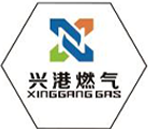
Oct . 22, 2024 11:27
Back to list
pressure vessel
Understanding Pressure Vessels Design, Applications, and Safety
Pressure vessels are specialized containers designed to hold gases or liquids at a pressure significantly different from the ambient pressure. These vessels are integral components in various industries, including oil and gas, chemical processing, power generation, and water treatment. The design, construction, and maintenance of pressure vessels are governed by strict engineering standards and regulations to ensure safety and reliability.
Design and Materials
The design of a pressure vessel begins with understanding the intended operating conditions, including the type of fluid to be stored, the pressure and temperature levels, and the environment in which the vessel will operate. Engineers employ various design codes, such as the ASME Boiler and Pressure Vessel Code in the United States, to certify that the vessel can withstand the operating conditions without failure.
Materials used in constructing pressure vessels must possess high strength, corrosion resistance, and the ability to withstand extreme temperatures. Common materials include carbon steel, stainless steel, aluminum, and composite materials. The choice of material often depends on the fluid being contained; for instance, corrosive substances may require special alloys or protective coatings.
Types of Pressure Vessels
Pressure vessels can vary in shape and size, with the most common forms being cylindrical, spherical, and conical. The cylindrical vessels, often used for storing liquids, are typically made with a rounded shape to distribute stress evenly across the structure. Spherical vessels, while less common, are typically used for gases and can withstand high pressure without substantial material costs.
Apart from standard vessels, specialized designs include heat exchangers, reactors, and storage tanks. These vessels often have additional requirements, such as insulation for thermal efficiency or specific fittings for process integration.
pressure vessel

Applications
The applications of pressure vessels are vast. In the oil and gas industry, pressure vessels are used to store natural gas, oil, and other fluids at high pressures. In chemical processing, they serve as reactors for various chemical reactions, allowing for the safe handling of hazardous materials. Power plants utilize pressure vessels in boilers to generate steam for electricity production. In pharmaceuticals and food production, pressure vessels may be utilized for sterilization processes, ensuring product safety and compliance with health regulations.
Safety Considerations
Given the potentially hazardous nature of the materials contained in pressure vessels and the high pressures involved, safety is paramount. Regular inspections and maintenance are crucial to identify wear and potential failures. Modern pressure vessels are equipped with safety features such as pressure relief valves and rupture disks to prevent over-pressurization.
In addition to routine maintenance, advancements in technology have led to the implementation of monitoring systems that can provide real-time data on the vessel's condition. These systems can alert operators to potential issues before they become critical, thereby enhancing safety further.
Conclusion
Pressure vessels play a crucial role in modern industrial processes, enabling safe and efficient storage and processing of materials under high pressures. As industries evolve, the design and technology surrounding pressure vessels continue to improve, focusing on enhancing safety, efficiency, and environmental sustainability. Understanding the intricacies of pressure vessel design, operation, and safety is essential for engineers and operators involved in industries that rely heavily on these vital components.
Latest news
-
Safety Valve Spring-Loaded Design Overpressure ProtectionNewsJul.25,2025
-
Precision Voltage Regulator AC5 Accuracy Grade PerformanceNewsJul.25,2025
-
Natural Gas Pressure Regulating Skid Industrial Pipeline ApplicationsNewsJul.25,2025
-
Natural Gas Filter Stainless Steel Mesh Element DesignNewsJul.25,2025
-
Gas Pressure Regulator Valve Direct-Acting Spring-Loaded DesignNewsJul.25,2025
-
Decompression Equipment Multi-Stage Heat Exchange System DesignNewsJul.25,2025

